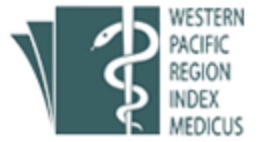The Clinical Characteristics and Outcomes of JAK2/ CALR/MPL Mutation Related Myeloproliferative Neoplasms - A Single Centre Study from Malaysia
DOI:
https://doi.org/10.31436/imjm.v24i01.2560Keywords:
myeloproliferative neoplasm, JAK2, MPL, CALR, clinical outcomesAbstract
INTRODUCTION: The pathogenesis of classical myeloproliferative neoplasm (MPN) driven by JAK2, CALR and MPL gene mutations affects the clinical course and survival. This study aimed to determine the prevalence of driver mutations in MPN patients and their association with clinical presentations and outcomes. MATERIALS AND METHODS: We conducted a retrospective study involving patients with classical MPN diagnosed from 2002 to 2019. The patient's clinical and laboratory information, as well as outcomes, were collected and reviewed. RESULTS: 267 patients with classical MPN were recruited into the study. Majority of these patients were Chinese (46.5%), followed by Malay (40.1%) and Indian (12.7%). Most of the patients had essential lthrombocythaemia (ET) (57.3%), followed by polycythaemia vera (PV) (30.0%) and primary myelofibrosis (PMF) (12.7%). JAK2V617F mutation was detected in PV (87.5%), ET (68.0%), and PMF (67.6%) patients whereas CALR mutation was present in 15.0% of ET and 8.8% of PMF patients and MPL mutation was present in 0.7% and 5.9% of ET and PMF patients respectively. CALR-mutated ET patients were less likely to develop vascular events compared to JAK2V617F mutated patients (Odds ratio 0.301, 95% confidence interval 0.097–0.939, p=0.039). As for clinical outcomes, triple negative PMF patients had shorter median overall survival than those with JAK2V617F mutation (24.0 months vs. 161.0 months, p=0.017). CONCLUSION: Majority of classical MPN patients were Chinese with ET being the most common MPN subtype. The mutation profiles, clinical features, and survival outcomes were comparable to previous reports. Mutation studies are therefore important for prognostication and should be performed routinely.
Downloads
Downloads
Published
How to Cite
Issue
Section
License
All material submitted for publication is assumed to be submitted exclusively to the IIUM Medical Journal Malaysia (IMJM) unless the contrary is stated. Manuscript decisions are based on a double-blinded peer review process. The Editor retains the right to determine the style and if necessary, edit and shorten any material accepted for publication.
IMJM retain copyright to all the articles published in the journal. All final ‘proof’ submissions must be accompanied by a completed Copyright Assignment Form, duly signed by all authors. The author(s) or copyright owner(s) irrevocably grant(s) to any third party, in advance and in perpetuity, the right to use, reproduce or disseminate the research article in its entirety or in part, in any format or medium, provided that no substantive errors are introduced in the process, proper attribution of authorship and correct citation details are given, and that the bibliographic details are not changed. If the article is reproduced or disseminated in part, this must be clearly and unequivocally indicated.










